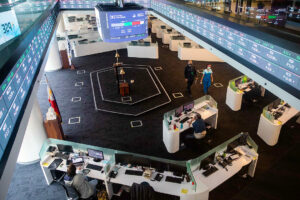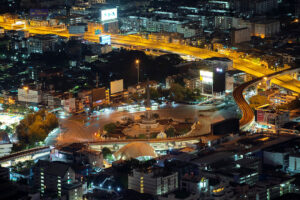Lessons from Japan’s economic miracle: Flying high

(Part 2)
In this corner on Sept. 26, I wrote about the phenomenal rise of Japan as an industrial powerhouse and the lessons the Philippines can learn from the Japanese experience.
For those who missed it, Japan’s remarkable transformation from a country broken by war to the second largest economy in the world happened over just 23 years. Its rise to economic power was principally achieved on the back of four pillars: A well-defined national goal (rapid industrialization) and the participation of the citizenry towards realizing it; investment in foundational industries such as steel, chemicals, and precision equipment; a focus on STEM learning; and, the formation of Keiretsus, or a group companies with interlocking ownerships and common business goals.
This is the second installment to Japan’s three-part economic saga. This piece describes how Japan multiplied its wealth from 1967 to 1989.
By 1967, Japan’s industrial backbone was firmly in place. It had steel mills, petrochemical plants, chemical laboratories, machine workshops, power plants, and glass and lens factories — basically all the essentials needed to manufacture industrial goods. With its industrial capabilities, Japan quickly became the manufacturing hub of the world for light industries. This included household appliances, light industrial equipment used for manufacturing, precision equipment (e.g., musical instruments, science laboratory equipment, etc.) and even toys. Japan was already manufacturing automobiles and motorbikes at this time but would only begin to export them in the early 1970s.
Between 1967 to 1985, Japan continued to export its manufactures all over the world. Buoyed by research and development spending of some 11% of annual turnover, Japanese goods grew in technological sophistication and reliability. Brands like Sony, Sanyo, Kenwood, and Nakamichi became household names. So did Toyota, Suzuki, Mitsubishi, and Yamaha in the industrial sector.
With a booming economy, Japanese conglomerates began to establish their corporate footprints in foreign markets. They invested heavily in establishing distribution and/or manufacturing facilities in every major market in the world. Multinationals repatriated their profits to the motherland and this contributed to Japan’s growing fortunes.
Throughout the late ’70s and early ’80s, the Japanese government invested heavily in promoting Japanese culture abroad. In time, Japanese gastronomy, culture, and way of life came to vogue and this bode well towards increasing patronage of Japanese goods. Japan was winning market share in almost every category it competed in, be it in automobiles, home appliances, and electronics.
By 1985, the United States’ industrial sector became increasingly worried that they were losing their own domestic market to Japan. Since they could not compete with the Japanese’ cost advantage, they appealed to the US Congress to slap stiff tariffs on Japanese made goods.
But the American Congress did not consider this proposal. See, if they slapped tariffs on Japanese products, Japan would readily to the same. Both countries would be worse off as their citizens would be deprived of quality products at the lowest price.
So, a compromise was reached. The US would depreciate its currency in relation to the Japanese yen (along with the French franc, German mark, and British pound). With this, Americans would have less purchasing power for goods made in Japan. Conversely, American goods would be made cheaper for the Japanese. This devaluation plan was enshrined in what is called The Plaza Accord.
Why did Japan agree to this scheme? First, they did not have much of a choice. Second, Japan relies on the US for its wheat, corn, and raw materials. A devalued dollar would make importing these goods more affordable.
The Plaza Accord made the Japanese rich as the value of the yen doubled in three years. With a strong currency, the Japanese were able to buy US assets with less yen. So, they went on a buying spree. They bought numerous American companies and historical landmarks including the Rockefeller Center, CBS Records, Columbia Pictures, and many others.
With their newfound wealth, the Japanese people began to level up their lifestyles. Japanese tourist began traveling the world and spending on luxury goods. The Japanese Central Bank reported that in 1989, corporate Japan booked $50 billion ($113 billion in today’s money) on travel and corporate representation expenses.
The Japanese people invested in real estate to such as extent that prices of Japanese properties skyrocketed to unpresented levels, not even matched today. In 1989, a mere inch by five-inch piece of land in downtown Tokyo was valued upwards of $100.
The Japanese Central Bank slashed interest rates to encourage corporate Japan to expand their businesses. But with the intoxicating mood of the era, the Japanese used low interest loans to snap-up more real estate and speculate on the stock market.
Fueled by speculative investments, it was not long before the property market and stock market crashed. This marked the start of the economic stagnation of the ’90s, commonly referred to as Japan’s lost decade.
Next week, I will explain the reason for Japan’s economic stagnation, the economic reform employed by the Japanese government to battle it, and whether or not it worked. Watch out for it.
Andrew J. Masigan is an economist
Facebook@AndrewJ. Masigan
Twitter @aj_masigan




